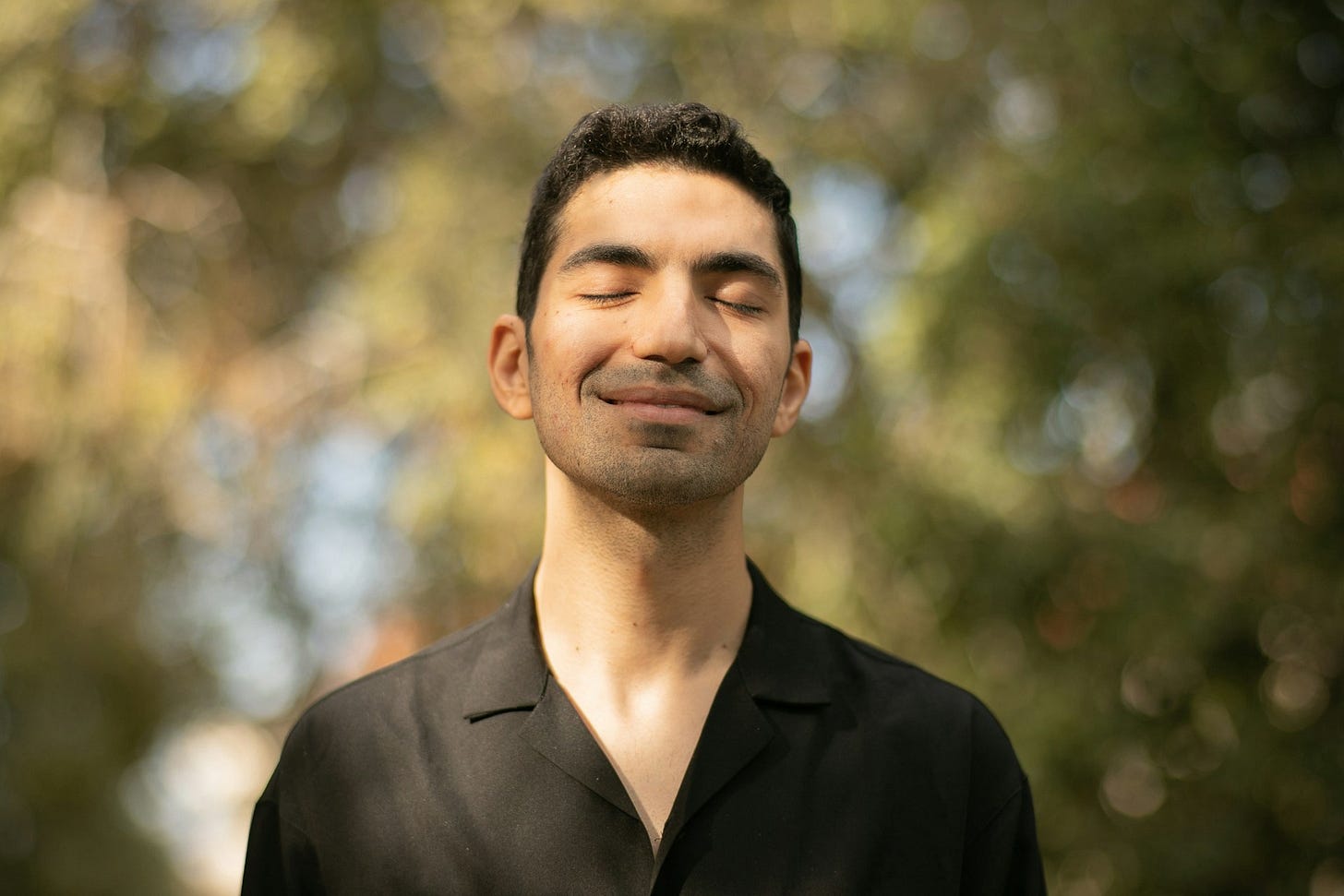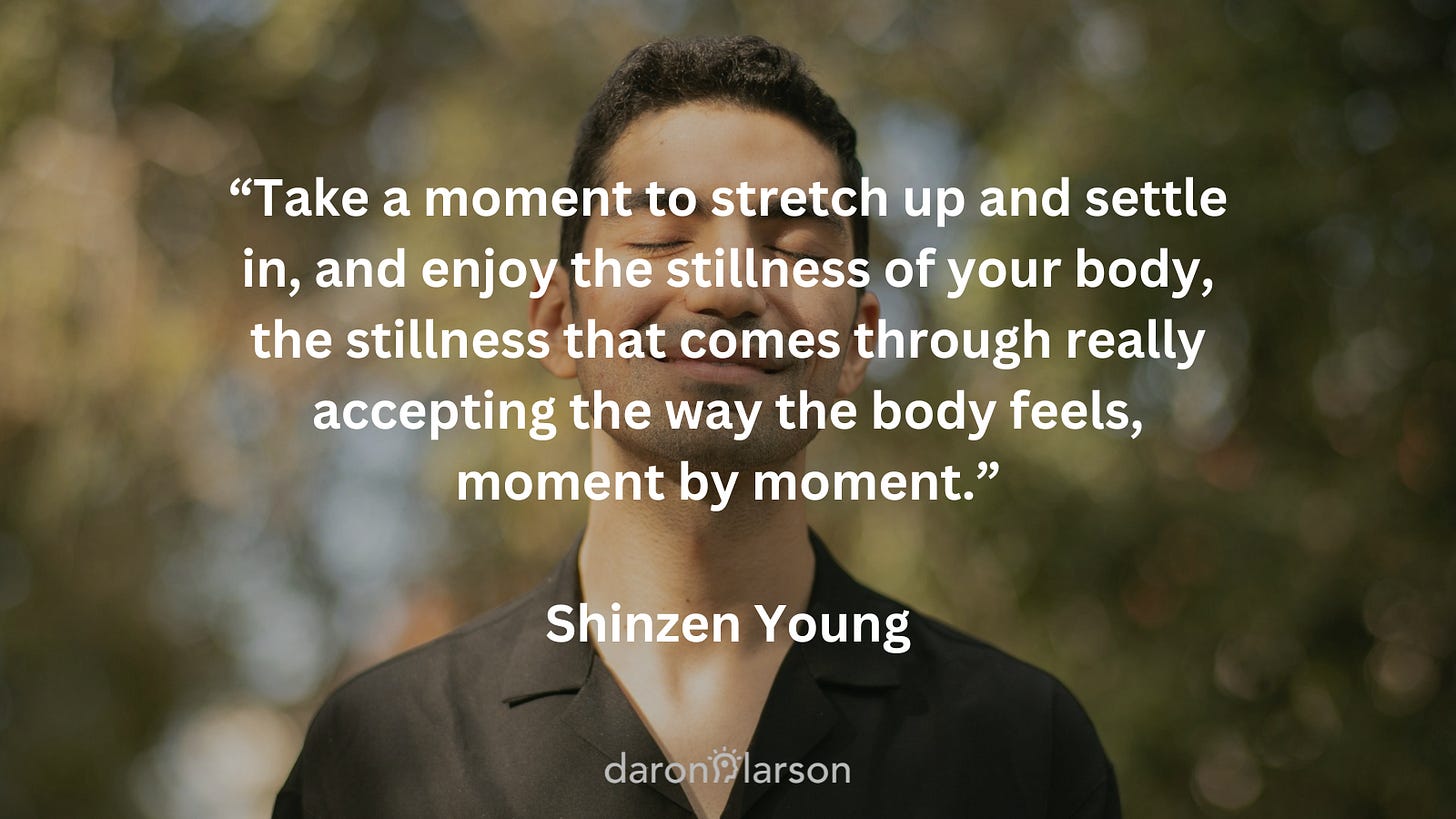Cultivating mindful awareness requires setting aside your preconceptions about what mindfulness is, deciding what to focus on, and mindfully ignoring everything else.
Mindfulness isn’t what you think
Mindfulness is not about trying to clear your mind. It doesn't involve eliminating unpleasant feelings or maintaining deep states of unshakeable peace throughout the day.
It’s about developing a deeper level of intimacy with the experience of being alive, regardless of what’s happening inside or around you.
Practicing mindfulness, whether through structured meditation or by being more attentive in daily life, means toggling from a narrative focus to directly observing real-time sensations and perceptions.
It's about taking breaks from perpetual mental storytelling to categorize your perceptions into sensory-based categories. The thing that throws people off is not knowing how to respond to all the stuff they're not intentionally focusing on. Trying to push distractions away is intuitive, but since it doesn't work, it only escalates the frustration.
However, things can take a fascinating turn when you adopt a counterintuitive approach. Instead of fighting against distractions, consider learning call off the battle with them.
Choose a focus
Breath awareness is the most commonly promoted mindfulness exercise, and it often feels like the only option available. While it is a good one, it's important to know that it is just one among many.1 Understanding this opens the door to developing attentional agency—the empowering ability to choose what to focus on in any given moment.
Mindful awareness of breathing involves exploring the physical sensations that you can observe as you breathe. There are many other bodily sensations that you could choose to focus on, including pleasant sensations, discomfort, and sensations related to vital bodily functions.2 Other sensory contenders include sights, sounds, and the flavors and fragrances related to eating.3
When you select a sensory category to focus on, you're also deciding what to ignore. However, practicing mindfulness requires a special kind of ignoring that can only be fully understood through experience.
Ignore everything else
Mindfully disregarding the many perceptions outside your focus range doesn't mean you don't notice them. It means letting them stay in the background of your awareness and repeatedly choosing not to actively engage with them. This is challenging, but not impossible.
The most common instruction regarding this aspect of practice goes something like, "Whenever you realize that you're thinking about the past or future, gently return to focusing on the breath." This popular guidance highlights the limitations of language in conveying subtle perceptual nuances. It’s very common to mistakenly interpret this instruction to mean that thinking is an enemy of mindful awareness.
Even when mindfulness teachers try to convince people that recognizing when their attention has wandered is as beneficial as focusing on the chosen sensation, individuals take this as evidence of their inability to practice mindfulness.
Exploring various attention exercises is crucial to challenge this assumption. It can also be helpful to consider other areas of daily life where it’s possible to focus on one thing without micromanaging what is happening in the background.
Keeping your eyes on the road while driving, even with kids arguing in the backseat.
Focusing on what your friend is saying in a restaurant while music and other conversations fill the room around you.
Watching a scene unfold on a screen while people in a theater or your living room are scrolling on their phones, laughing, leaving the room, or coming back with snacks.
The attention exercise explained below provides an alternative approach to addressing this challenge by focusing on pleasant physical sensations. It utilizes the rhythm of breathing to measure brief moments of awareness of these sensations. While briefly highlighting comfortable sensations, thoughts are invited to play out in the background along with sights, sounds, and unpleasant body sensations.
There is no expectation that you'll be relaxed from head to toe, that your surroundings will cooperate, or that your mind needs to settle. It's a both/and approach, which means that both focusing and ignoring are happening simultaneously.
When you notice that you're mainly focused on a sight, sound, or thought, and you have lost awareness of your body sensations—which is normal and not an indication that you are doing the exercise incorrectly—try to also observe some relaxation in your body. Instead of trying to eliminate distractions, simply acknowledge them. Invite them to hang out with you while you explore what feels comfortable.
Exercise
This exercise clarifies a counterintuitive way to weaken the gravitational pull of distractions.
Circumstances for learning this attention exercise
taking a break from the news
taking a break from an important task
getting ready for bed
Listen to this episode with a 7-day free trial
Subscribe to Phenomenal Awareness to listen to this post and get 7 days of free access to the full post archives.














